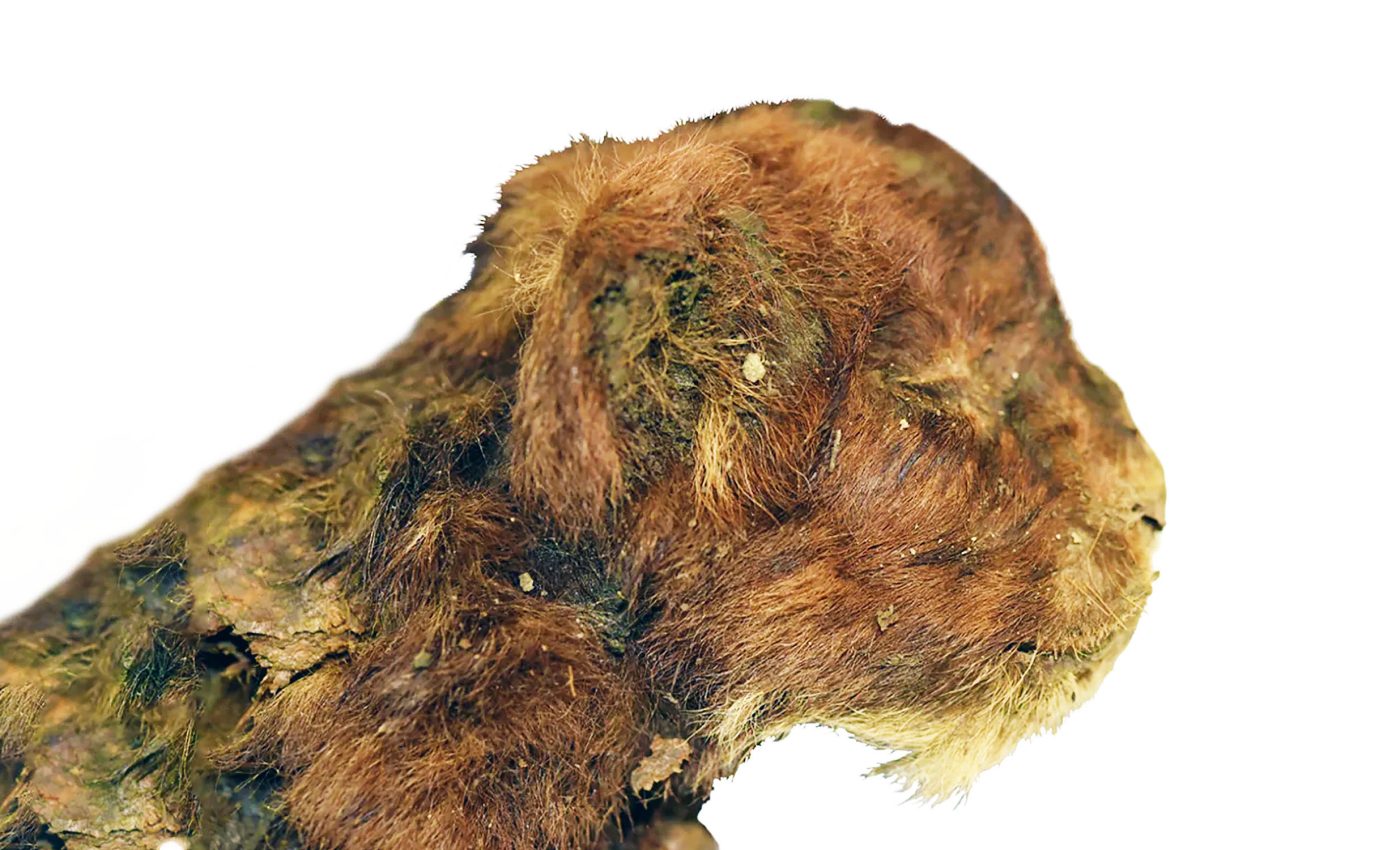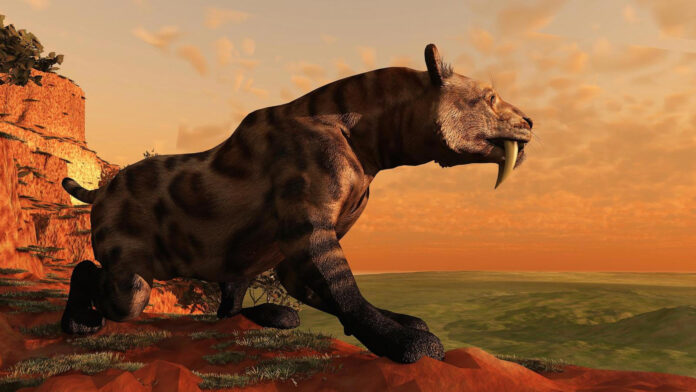In A Groundbreaking Paleontological Discovery, A 35,000-Year-Old Mummy Of A Newborn Sabre-Toothed Cat Has Been Unearthed Along The Banks Of The Badyarikha River In Siberia, Russia. This Well-Preserved Mummy, Still Retaining Its Fur, Skin, Whiskers, And Claws, Is A Remarkable Find That Offers A Rare Insight Into A Species Extinct For Thousands Of Years.
The Discovery Has Radically Expanded Scientists’ Understanding Of The Distribution Of The Sabre-Toothed Cat, Homotherium Latidens, And Is Confirmed To Have Lived In The Late Pleistocene Period In Asia. This Is The First Evidence Of This Species’ Presence In Asia During That Time, Marking A Significant Milestone In Paleontological Research.
Discovery of The Frozen Mummy
The Frozen Mummy Was Discovered By A Team Of Paleontologists Led By A.V. Lopatin Of The Borissiak Paleontological Institute And M.V. Sotnikova From The Geological Institute, Russian Academy Of Sciences. The Team Unearthed The Specimen In Siberia’s Permafrost, Which Helped Preserve It With Impressive Detail.
This Kitten, Which Was Just Three Weeks Old At The Time Of Its Death, Has Its Pelvic Bones, Femur, Shin Bones, And The Front Part Of Its Body Preserved—Right Up To The Edge Of Its Chest. Researchers Were Astounded To Find Its Whiskers, Claws, And Other Features Perfectly Intact.

Unique Characteristics Of The Sabre-Toothed Kitten
For The First Time, Scientists Have Had The Opportunity To Study The Physical Characteristics Of A Sabre-Toothed Kitten In Detail. Their Research Revealed Notable Differences From Modern Lion Cubs, Including A Unique Muzzle Shape With A Larger Mouth Opening, Small Ears, A Robust Neck, And Elongated Forelimbs. The Kitten Also Had A Dark Coat, Setting It Apart From Today’s Big Cats.
The Discovery Provides Valuable Insight Into The Fur Texture, Muscle Distribution, And Developmental Stages Of This Extinct Species, Giving Scientists A Clearer Picture Of The Life And Evolution Of The Sabre-Toothed Cat.
Changing Our Understanding of The Species’ Distribution
Previously, Fossil Evidence Had Placed The Homotherium Latidens Species In Eurasia During The Middle Pleistocene, Between 770,000 And 126,000 Years Ago. However, The Discovery Of This Mummy Pushes The Known Existence Of The Species Into The Late Pleistocene Period, Which Spans From 126,000 To 11,700 Years Ago.
This Find Confirms That The Sabre-Toothed Cat Survived Longer Than Previously Thought, Extending Its Range Well Into The Ice Age Period Of Eurasia. This Is The Second Piece Of Evidence For The Presence Of H. Latidens In The Late Pleistocene, And The First From Asia.
Radiocarbon Dating Reveals Ancient Origins
Through Radiocarbon Dating, Scientists Have Confirmed That The Mummy Has Been Encased In Permafrost For At Least 35,000 Years. Some Estimates Suggest It Could Be As Old As 37,000 Years. This Remarkable Preservation Has Allowed Researchers To Study The Juvenile Development Of The Kitten, Providing Crucial Insights Into The Early Postnatal Growth Of Homotherium.
What Is A Sabre-Toothed Cat?
Sabre-Toothed Cats, Particularly Those From The Extinct Genus Homotherium, Were Large Carnivores That Roamed The Earth During The Pliocene And Early Pleistocene Epochs. They Are Most Recognized For Their Elongated, Blade-Like Canine Teeth, Which Extended From Their Mouths Even When Closed.
These Cats Were Adapted To Various Environments, With Fossil Evidence Showing That They Inhabited North America, South America, Europe, Asia, And Africa. They Were Powerful Predators, Hunting Large Prey With Their Sharp Teeth And Strong Bodies, And Dominated The Food Chain During Their Time.

Why This Discovery Matters?
This New Find Is Revolutionizing Our Understanding Of Sabre-Toothed Cats And Their Geographic Spread Across The Earth. It Pushes Back The Known Existence Of Homotherium Latidens Into A New Era, Offering A Better Understanding Of The Species’ Evolution, Behavior, And Distribution During The Late Pleistocene.
The Frozen Mummy Provides A Rare Opportunity To Study The Detailed Anatomy And Growth Patterns Of These Ancient Creatures, Offering Paleontologists A Treasure Trove Of Information About An Era Long Past.
What’s Next For The Sabre-Toothed Kitten Mummy?
As Research On The Mummy Continues, Scientists Are Eager To Learn More About Its DNA, Diet, And Environmental Context. Further Analysis Could Unveil Even More Details About The Life And Death Of This Ancient Cat, As Well As Its Place In The Ecosystem Of The Late Pleistocene.
This Discovery Marks A Significant Milestone In Paleontology, Not Only For Its Impressive Preservation But Also For The New Insights It Provides Into The Ancient World. The Sabre-Toothed Kitten Mummy From Siberia Will Continue To Fascinate Researchers And The Public Alike, Offering A Unique Glimpse Into The Past.

